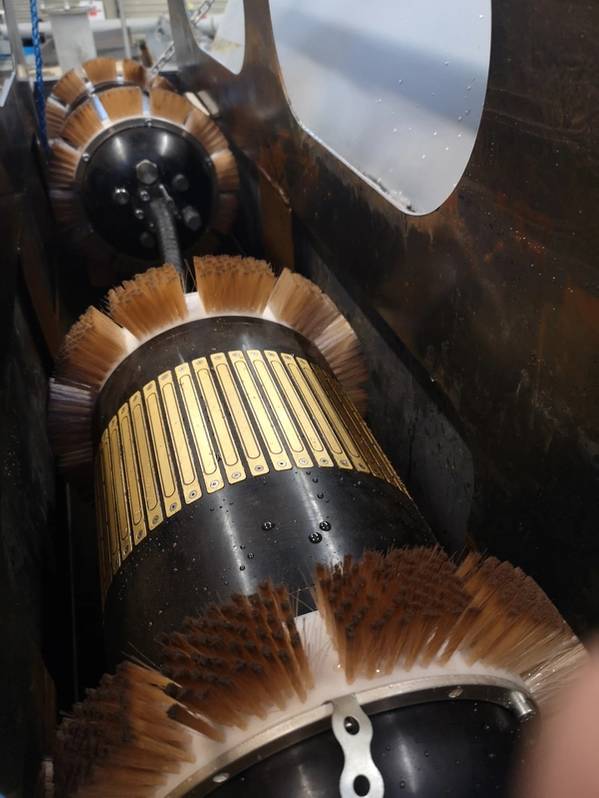
Finland’s Rocsole is hoping to provide operators with better, faster insight into their pipelines through a new compact inline sensor and a large dose of data analytics. Its inspection tool uses electrical tomography and digital signal processing to measure conductivity and permeability values within a pipeline. These are then analyzed to determine the content – fluid and solid – of pipelines or vessels, such as separators.
The technology has had the backing of Shell, who are trialling the Deposition In-Line Inspection (DILI) in a 12 in. water pipeline in Brunei in October to detect wax deposits. Planned this December, Rocsole also has a trial set up with Equinor, to inspect the 115 km-long Oseberg pipeline 28 in. export pipeline as well as further testing in its own flow loop. Mika Tienhaara, the company’s CEO, says that through the company’s data analytics, results are also available 300x faster than available today. This can reduce maintenance requirements because an operator knows the condition inside the pipeline within minutes following an inspection, he said. Current technologies can take up to several weeks, which is unhelpful if you have a maintenance routine based on inspecting the pipeline every two weeks, he said.
See Related Story: Barcodes to Drive Down Pipeline Inspection Costs
If an issue is detected, machine learning algorithms are able to indicate where in the pipeline it is, the deposit size, and type. The tool is also smaller than a standard pipeline inspection gauge, reducing the risk of it getting stuck in pipelines, says Tienhaara.
To date, the company has built 10in and 26 in. units but could build up to more than 40 in. capable systems, supplied on their own or with launching and receiving equipment.
The firm, set up in 2012, also has fixed sensors for separators, looking at emulsion layers and sand build-up monitoring, commercialized last year. Tienhaara says the technology could also be modified to run on electric wireline to monitor scale build-up in production wellbores or even as a rig-mounted sensor to provide a new way of monitoring the presence of gas in drilling mud.
 Rocsole’s Deposition In-Line Inspection tool. Source: Rocsole
Rocsole’s Deposition In-Line Inspection tool. Source: Rocsole